This post is based on my Week 2 class for EGR381: Design for Understanding this semester.
Cognitive-neuroscience is one of the core building blocks of information design. Understanding how we learn and process information is as essential to effectively design information as learning design principles. Gaining familiarity with cognitive activities involved in those processes can help understand why information design solutions work or do not work as intended, and shed light on the value of conducting human-centered research at different steps in the design process.
Learning how we Learn
A mental model is a cognitive structure associated to a specific meaning based on neural connectivity (neural associations or networks). Imagine a mental model as your explanation of how something is or works, or the meaning you give to a situation or a concept. Mental models depend on our experiences; this is why each of us has different ones. We start creating mental models since early age based on our interaction with the world. As we grow up, we learn and understand things in relation to what we already know; that is, the knowledge we have stored (our mental models) in our long term memory.
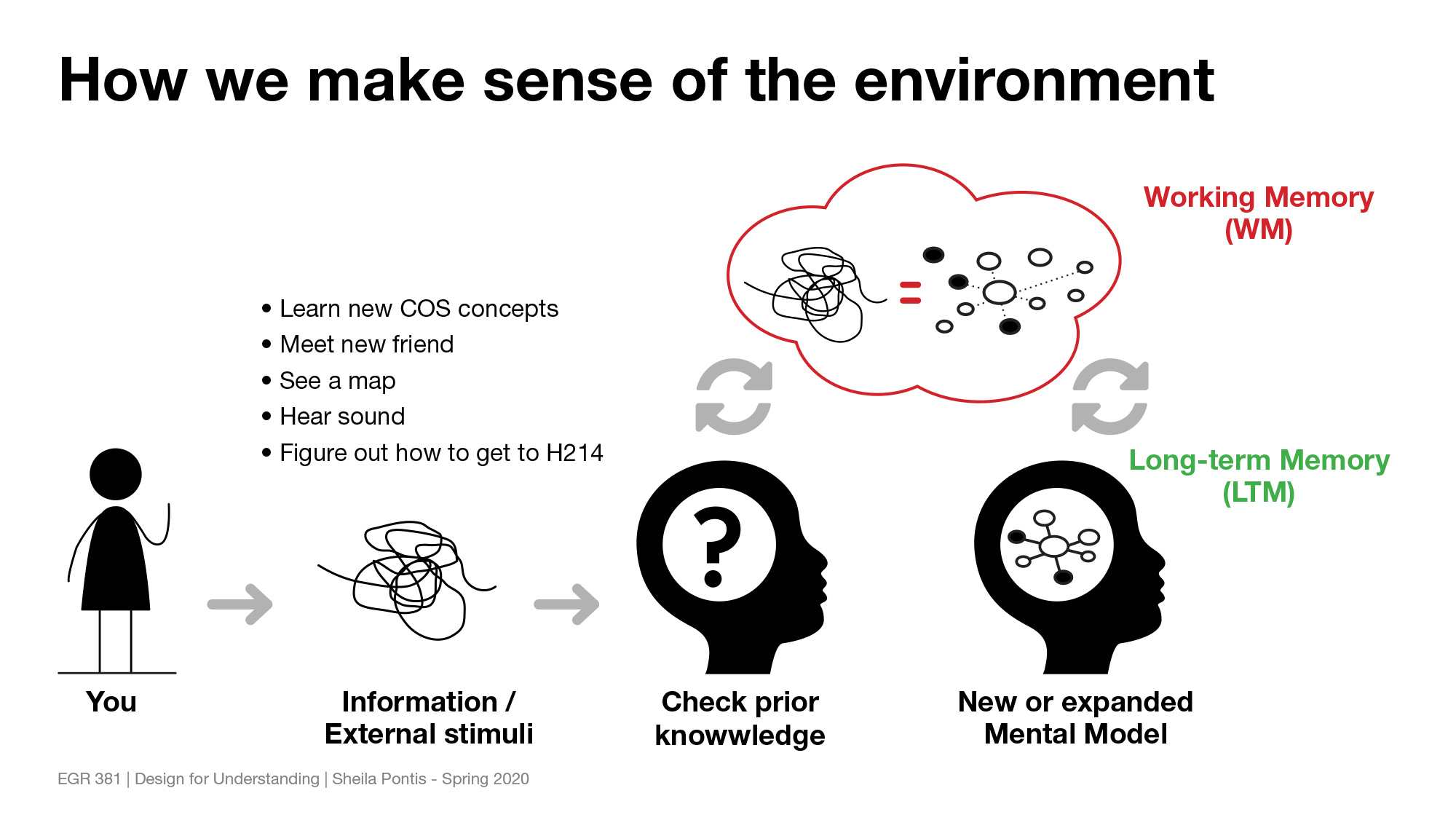
Learning involves either forming new mental models or accommodating new experiences and information to stored mental models. Every time we learn something new, we first check our prior knowledge for connections; then we expand an existing mental model or create a new one that gets stored in long-term memory. This process of transforming incoming information into a stored mental model is called encoding.
Our existing mental models tend to determine how we understand, evaluate and shape new information. Don Norman explains that “mental models are what people really have in their heads and what guides” how they use things and understand the world.
Mental models in information Design
The following are two common problems that information designers tackle as part of their job:
- Situations that lack order. Unorganized information (e.g. raw data) is hard to understand because we are unable to make connections between what we see and our stored mental models.
- Unfamiliar or complex information. Concepts that are highly complex or unfamiliar to us are hard to understand because we first need to determine whether one of our stored mental models can help us make sense of the content. If we cannot connect any part of the content with anything else that is familiar to us (i.e. a mental model), we don’t understand the content and we feel frustrated (e.g. scientific content is not for us).
In either case, when we try to make sense of these types of information, we use loads of cognitive energy, hence we feel tired. Using high levels of cognitive energy goes “against” the nature of the brain as, by default, the brain is wired to use as little energy as possible (survival mechanism).
Cognitively, it is easier to reuse stored mental models than to create new ones, because this involves lower levels of energy. Interestingly, changing (completely, not just expanding) an already stored mental model also requires more energy than creating a new one. This explains why in some cases it seems harder to understand something when you already have a previous, but incorrect understanding of the situation (e.g. when someone wants to correct fake news, people have a hard time changing their minds: it is hard for people to “unheard” what they already heard and 100% reframe their stored mental models).
In terms of information design, when information design is effective, the unfamiliar is shown as something familiar making it easier for the intended audience to find connections between the design and what they already know. They successfully encode the new information by connecting it with their stored mental models. This results in the user understanding the content being explained, and feeling accomplished.
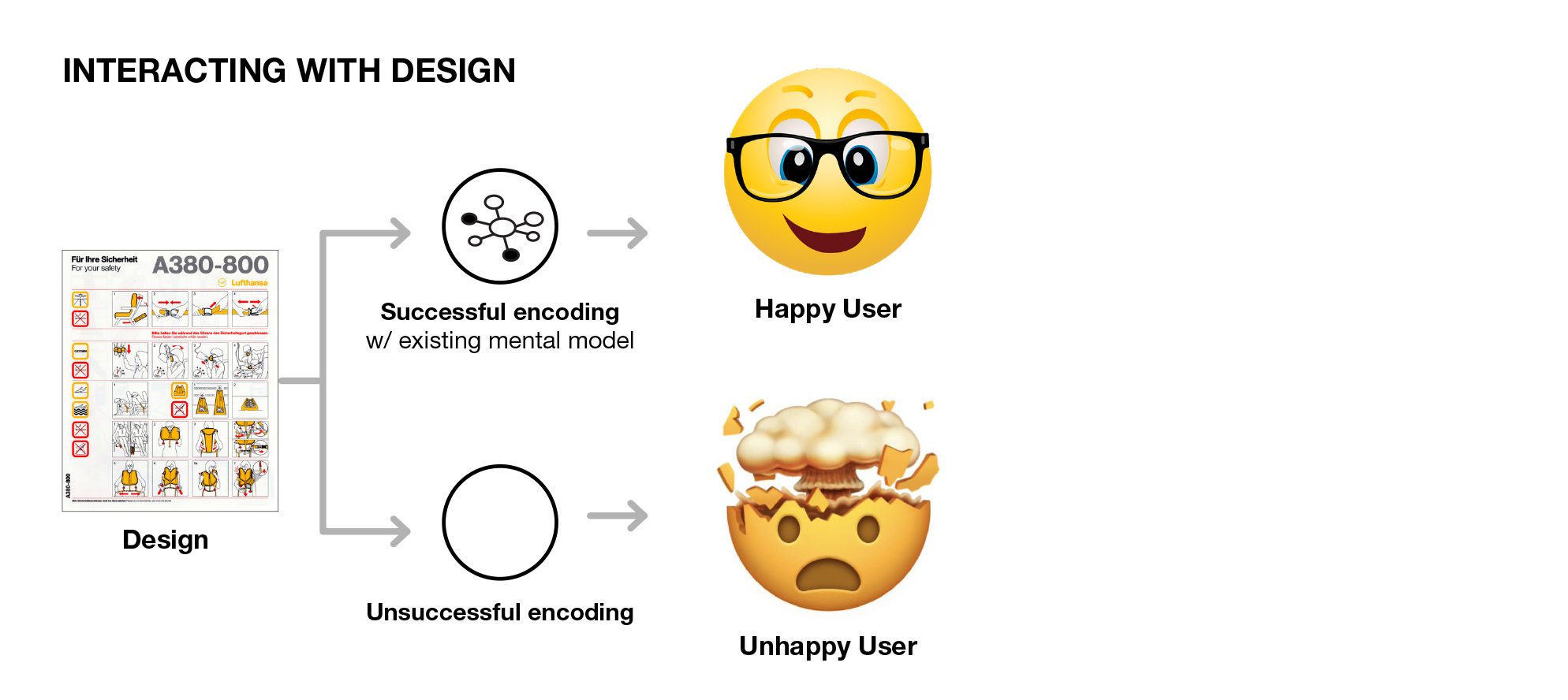
There is also another component that determines the success of a design: the application of that understanding into a relevant situation or knowledge transfer. In simply words, information design is effective when both the intended audience understands the message (encodes) and is able to successfully apply the new knowledge (mental model retrieval) to a relevant situation.
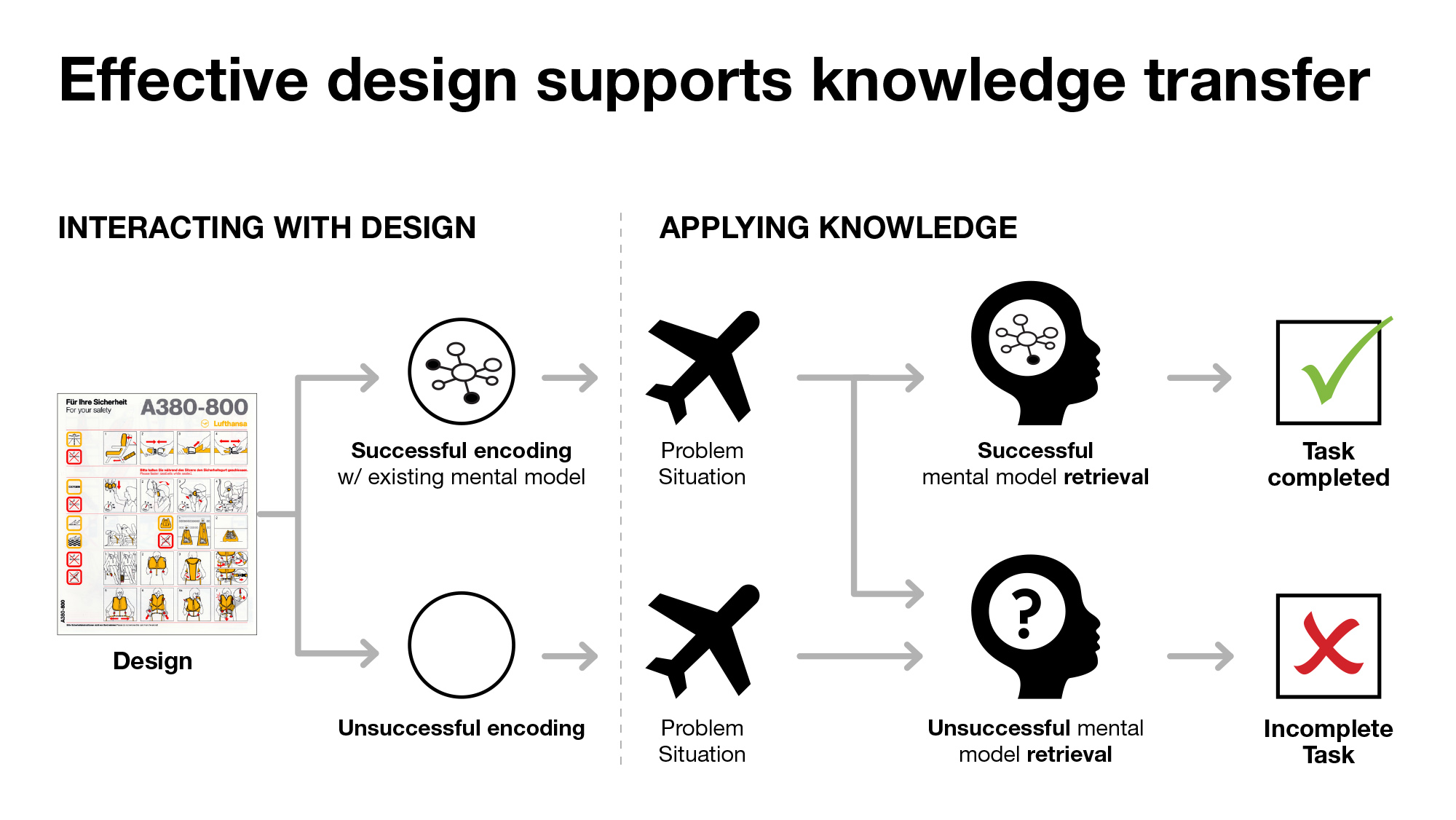
However, in some cases, we see a design piece that checks all boxes for effective use of design principles (well-structured, clean design, functional use of visual variables, clear information organization) but we cannot understand the message or how to use it. In a case like this, something doesn’t make sense to us. What is the problem? The short answer is: a mental model mismatch.
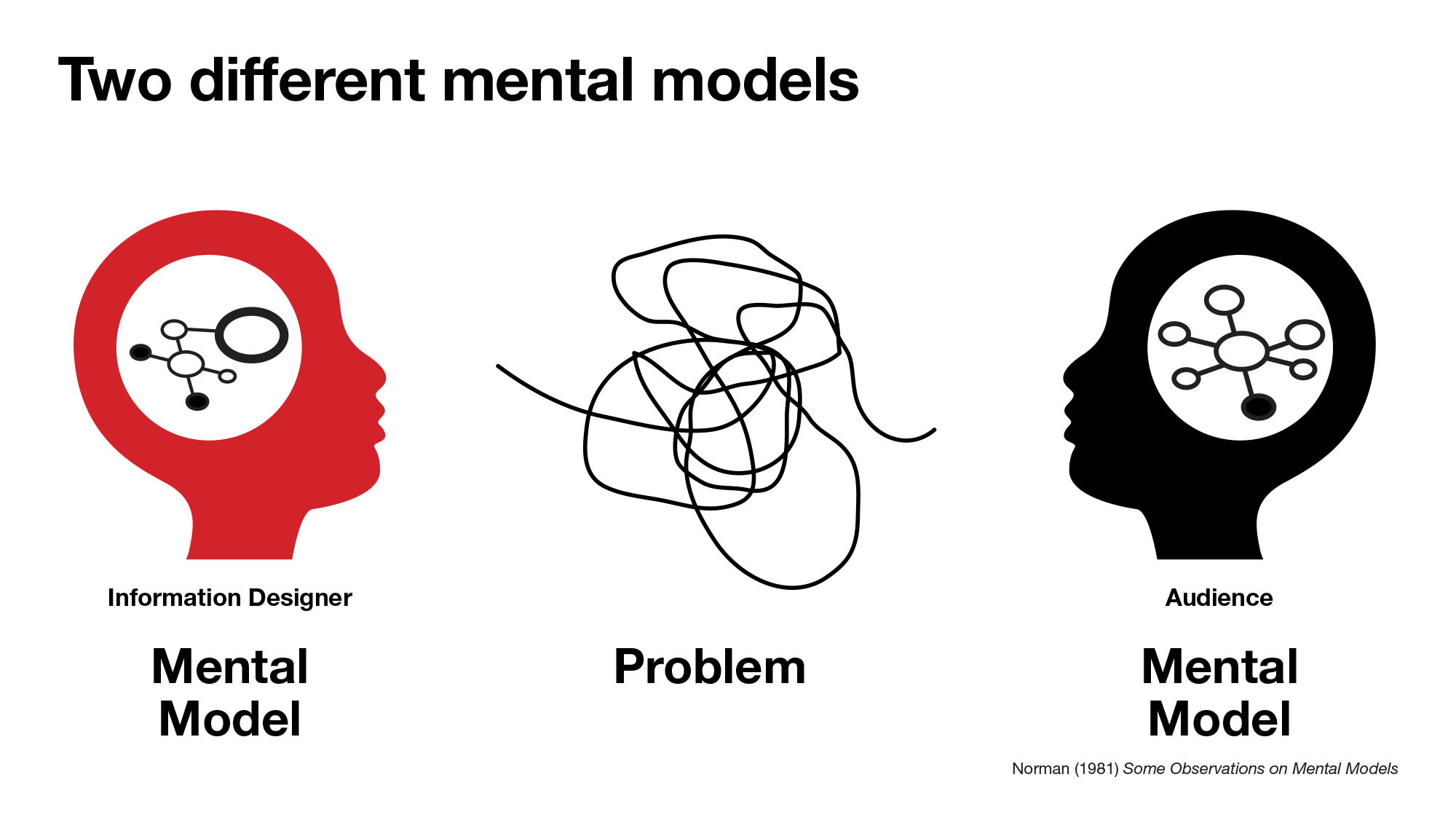
At the beginning of a project, to make sense of the problem at hand, information designers create a conceptual model (sketch, wireframe, etc.) as a simplified representation or explanation of their understanding (of that problem). In this case, conceptual models are based on the designer’s mental models. Frequently, information designers use that same initial conceptual model as the blueprint of the final design solution (system image).
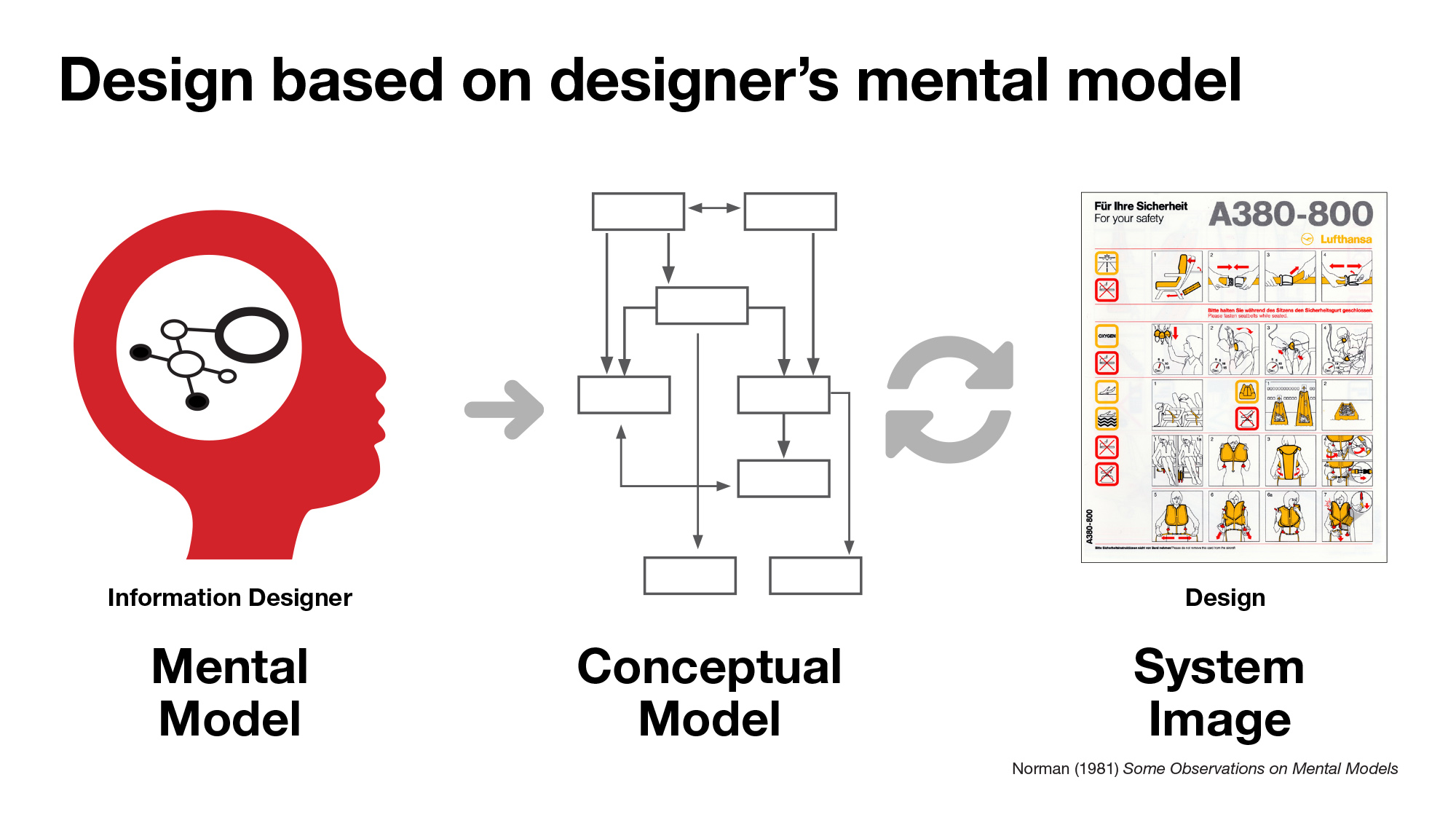
If the conceptual model does not match the intended audience’s mental models, the design fails because the resulting design is hard to understand and use.
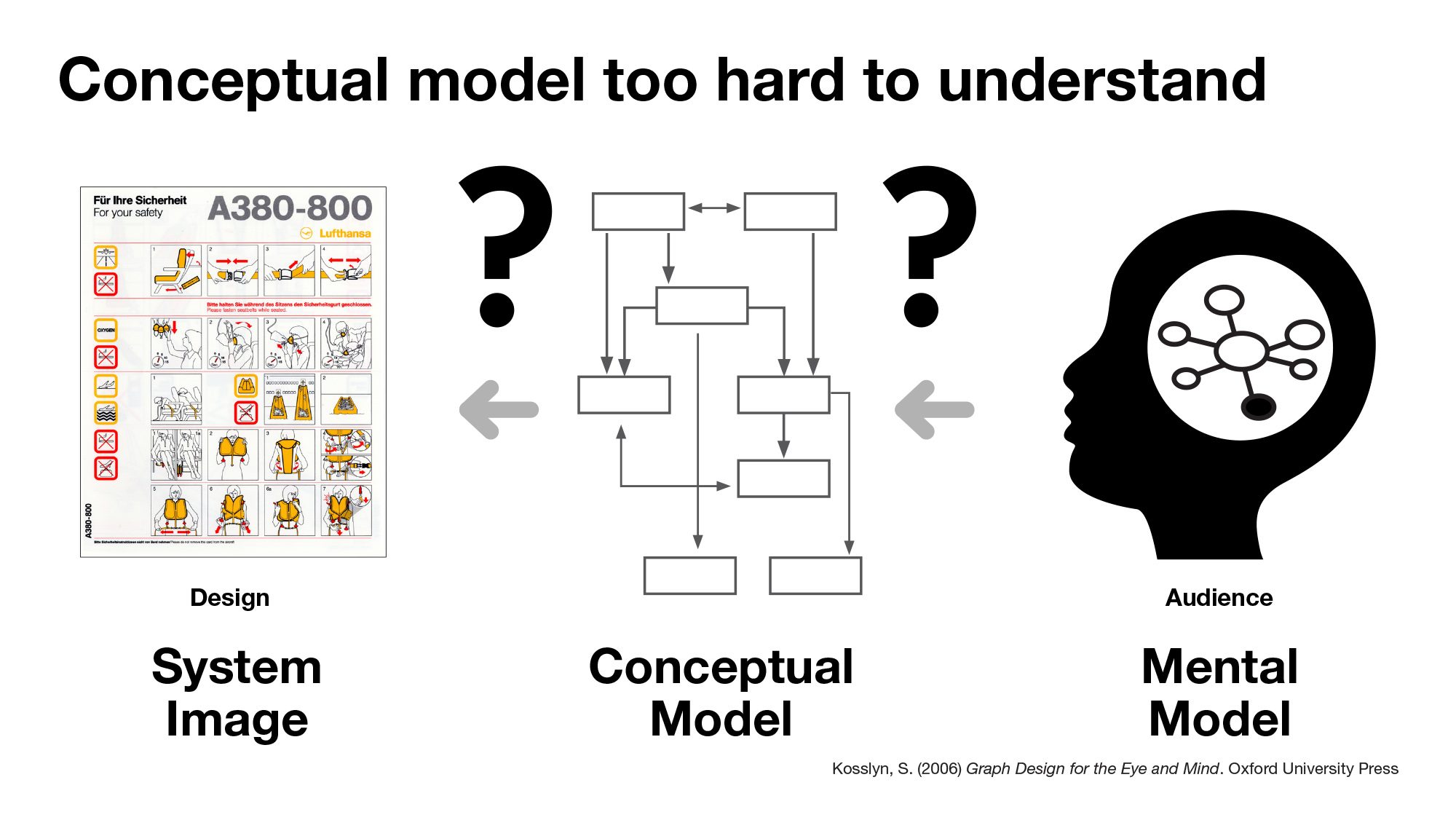
On the other hand, when the conceptual model is created based on the intended audience’s needs, it is more likely to match their mental models, and result in a design that they can understand and use.
Conducting research early on in a project–so before the designer develops a conceptual model and design work begins–helps identify the intended-audience’s needs, what they know and don’t know, and create a solution that is aligned with, supports or expands their mental models.
Conducting research at the end in a project–so after a final design has been implemented–helps assess whether the intended-audience understands and interacts with the new design as intended. What is more, through this type of research studies, information designers can also gauge the success of their work based on whether the audience is able to apply the new knowledge as intended. In other words, if the audience uses the new design appropriately or applies the new knowledge to successfully complete a task.
—
– Colvin Clark, R. & Lyons, C. (2011) Graphics for learning. Second Edition. Pfeiffer.
– Kosslyn, S. (2006) Graph Design for the Eye and Mind. Oxford University Press.
– Norman, D. (1981) Some Observations on Mental Models, In Gentner, D. and Stevens, A.L., eds. Mental Models. Lawrence Erlbaum Associates Inc. pp. 7-14.
Leave a comment